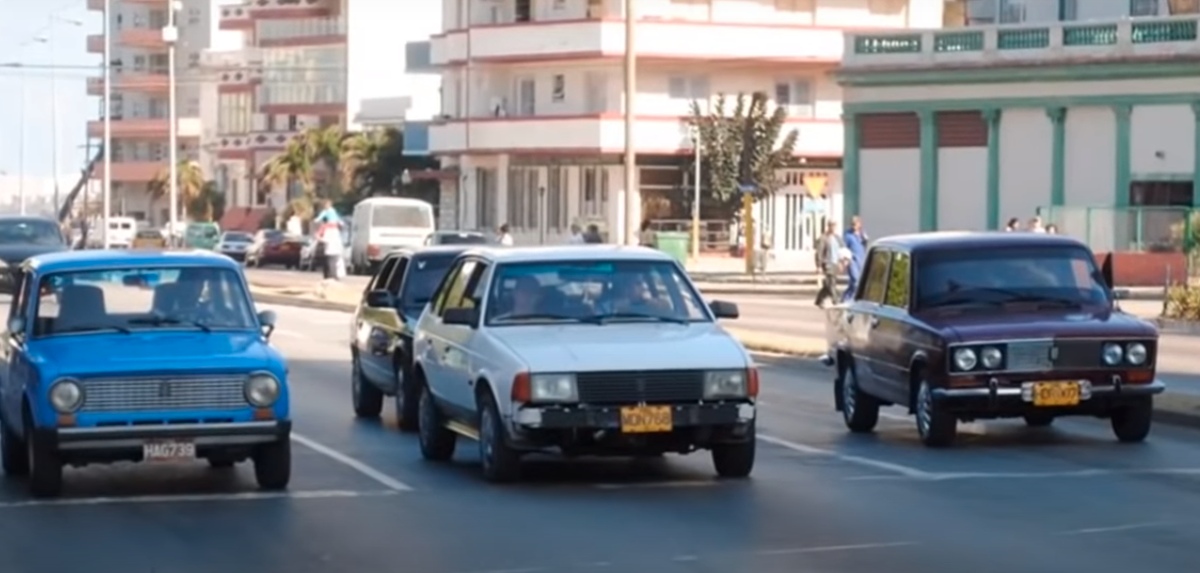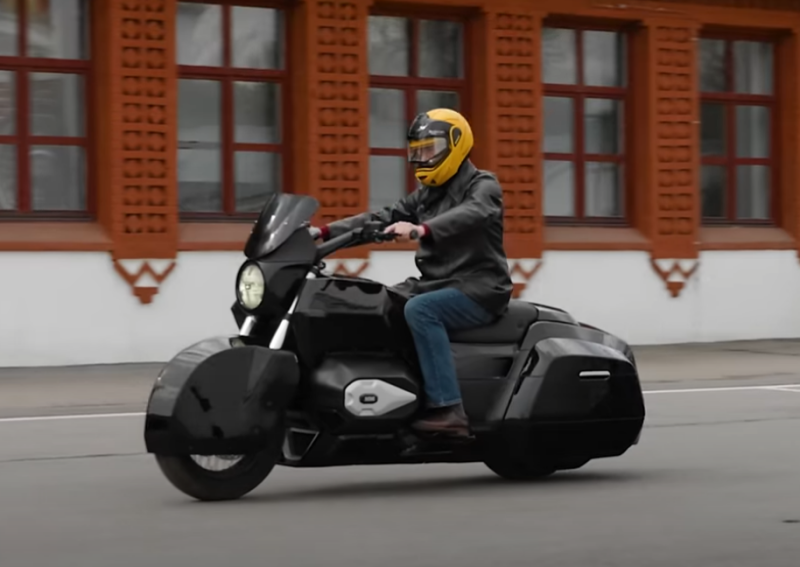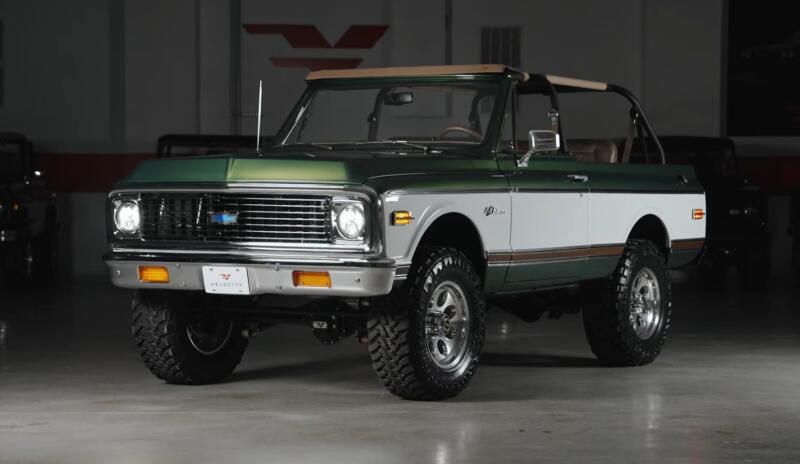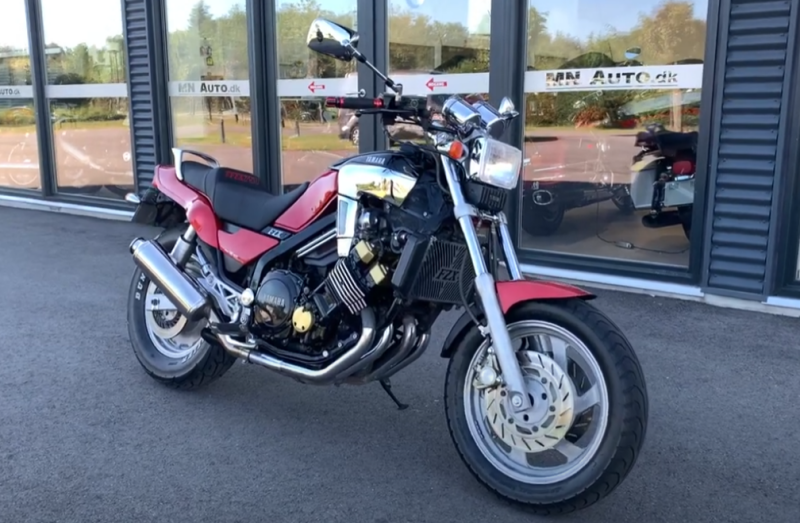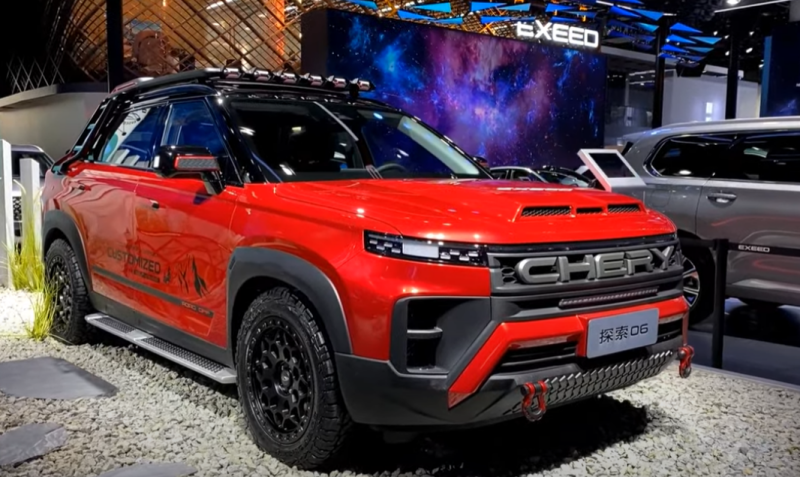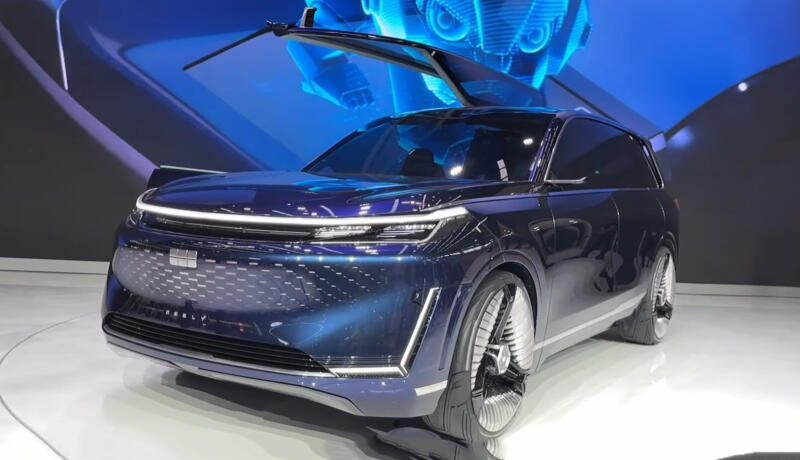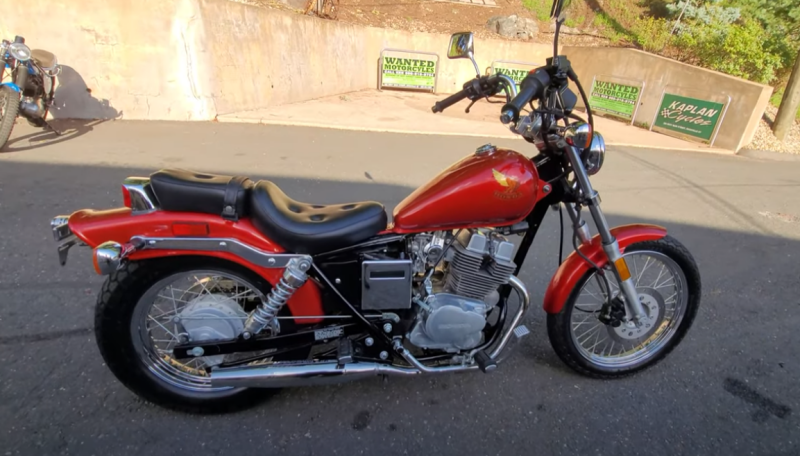Historical situation with transport
Before the revolution in 1959 Batista ruled the island. At that time, Cuba was a semi-colonial agrarian country, where it was unrealistic to buy a car for an ordinary resident (almost like now). But still, cars gradually began to penetrate farms, replacing the usual horses. At that time, there was one car for ten individuals.
 Horses are still a popular mode of transport in Cuba today. Photo: YouTube.com
Horses are still a popular mode of transport in Cuba today. Photo: YouTube.comAnd yet it was impossible to call the state of Cuba's car fleet deplorable. It was regularly "improved" by chic American limousines brought here by wealthy US citizens, for whom Cuba at that time was a cheap resort. Luxurious Chevrolet Impala, Chrysler Imperial remaining from that time quietly travel around the country today. By 1919, the island was one of the leaders in the number of cars per capita. After Fidel Castro took power, the flow of cars from neighboring States stopped.
 The Chrysler Imperial is a legacy of the Batista regime. Photo: YouTube.com
The Chrysler Imperial is a legacy of the Batista regime. Photo: YouTube.comCubans had to ride what was left of the old regime. Some assistance was provided by the countries of the socialist camp: first of all, the USSR with its first Muscovites, and then Zhiguli, which were actually exchanged for cane sugar. Skoda was supplied by Czechoslovakia, Poland - by Fiats. But all this is a drop in the bucket for a population of ten million: the average age of cars has grown steadily every year.
 Moskvich-2140 with one wiper looks colorful against the background of the old VW Beatle. Photo: YouTube.com
Moskvich-2140 with one wiper looks colorful against the background of the old VW Beatle. Photo: YouTube.comThe climate of the island is very “loyal” to metal: cars do not rust for a long time, and with good care, it seems that they will never succumb to corrosion at all.
After the collapse of the socialist world
In the 90s, Cuba buys vehicles from the already new Russia, China, and other countries. It even happened that cars were simply donated to the island. For example, Spain gave its former colony several school buses, Austria and Japan - trucks. But this, again, is extremely small, and today Cuba is a real reserve of classic cars of Soviet, European and American production.
US auto industry in Cuba
Before the Castro revolution, 70% of all exports were American goods, and automobiles were no exception. Sometimes even in Havana new items from the States appeared earlier than at home. In Cuba, they underwent a kind of “running in” - tests, and then they were sold at a low price. This was readily used by US citizens who specially came for such machines. They were taken out on a ferry that ran along the route Havana - Florida.
Hemingway, who lived in Cuba for 20 years, managed such models as the Lincoln Cabriolet Continental (convertible), Chrysler New Yorker limousine and others. These stamps can still be found on the streets of Havana today. Of the Cuban fleet of approximately 200 vehicles, 60 are American-made.
 The 1942 Lincoln Continental Cabriolet is a museum piece, and they drive one in Havana. Photo: YouTube.com
The 1942 Lincoln Continental Cabriolet is a museum piece, and they drive one in Havana. Photo: YouTube.comHowever, it is very difficult to meet a car that rolled off the assembly line in the 50s and 60s and retained its original look and technical “stuffing” intact. Due to the shortage of spare parts under the hood of an American (and any other) car, you can find, for example, a motor from a Zhiguli. And this is not the most interesting! Tourists from Europe and the United States may be shocked by a diesel engine from a pleasure boat inserted into some Buick from the 50s or a Pontiac.
 From three cars to collect one? Sure, not a problem! Photo: YouTube.com
From three cars to collect one? Sure, not a problem! Photo: YouTube.comFor more than 60 years, many Cubans have turned into virtuoso self-taught auto mechanics, capable, for example, of three cars produced at different times and in different countries, to assemble one (it is not clear how they are registered there). But the local “kulibins” achieved particular success in giving the car a sparkling “new” look: these are real masters of grinding, painting, varnishing.
 It's hard to say what's under the hood of this car... Photo: YouTube, com
It's hard to say what's under the hood of this car... Photo: YouTube, comSome American companies today specifically produce original spare parts for rare cars in order to sell them later in Cuba.
European transport in the homeland of cigars
The first car from the Old World came to the island in 1898, when there was still a war between the Americans and the Spaniards. This is the La Parisienne car that few people have heard of. Of the European countries, during the American embargo (now partially lifted), only France managed to maintain relations with the island of Liberty. Peugeot has the leading positions among the "euro brands", most often these are the 403 and 404 models.
 Peugeot 403 Cabriolet 1959 - convertibles in Cuba are in special demand. Photo: YouTube.com
Peugeot 403 Cabriolet 1959 - convertibles in Cuba are in special demand. Photo: YouTube.comWhen in 2011 all citizens were allowed to buy cars on the island, Peugeot even built the first (today there is no more) dealership. Another of the old European cars often come across Fiat 126 Polish assembly. The leaders today, in addition to Peugeot, are also Renault, as well as the South Korean Kia.
Soviet cars in Cuba
This is all the classics, starting from Pobedy, GAZ-24, Muscovites of various types, Zhiguli, UAZs and ending with GAZ-51-53, ZILs (130s and 131s), KAMAZs and even KrAZs. Cars mainly work in taxi companies, trucks - in agriculture, on "safaris" and the army.
 Here is a Cuban KAMAZ with the emblem of Mercedes. Photo: YouTube.com
Here is a Cuban KAMAZ with the emblem of Mercedes. Photo: YouTube.comRussia has not forgotten Cuba even today. In 2018, a batch of Lada Vesta was sent to the island - 344 copies. It was assumed that private taxi drivers would buy them.
 Lada Vesta in a Cuban taxi depot. Photo: YouTube.com
Lada Vesta in a Cuban taxi depot. Photo: YouTube.comHowever, the Russian Federation (and not only) has a serious competitor - China, which has reached out to this island. Even earlier, in 2008, the Cubans bought 1500 Geely CK for the police.
Features of purchasing and driving cars
In the last decade, Cubans have been able to buy a car officially and without permits, as it used to be. But there is a small snag - the average salary of a resident of the country is 20-30 dollars. And, for example, for a twenty-year-old VAZ-2105, they ask for 10 greenbacks! Some kind of Peugeot, which is hardly sold in Europe for 20 thousand euros, is offered here for 85 thousand in the same currency. American cars (such as limousines) are most valued: an old car (not rare, but just old!) Is sold for 30-100 thousand dollars. To buy a "hodgepodge" of forty years of age, where under the hood and bottom you can see components and parts from all over the world, an ordinary Cuban needs to live at least two lives.
 Taxi driver is one of the most prestigious professions in Cuba. Photo: YouTube.com
Taxi driver is one of the most prestigious professions in Cuba. Photo: YouTube.comAnd that's not all: on the island, gasoline is almost twice as expensive as diesel fuel and costs around two dollars (I wonder how they fill the same 131 with its consumption of 55l / 100 km). When Hugo Chavez was alive, diesel fuel was supplied at a relatively low price, but after the death of the leader, "the shop closed."
What about today?
Cuba is a country where people take their time, preferring a calm, measured rhythm of life. All innovations take place gradually, including the situation with vehicles. But it is still improving: in 2014, 50 people became the owners of new cars, and in 2018 already 4500. There was a decline in the pandemic years, but demand is recovering: in 2021, there was an increase of 46% compared to the previous year. The sales leader is Peugeot, followed by Kia and BYD from China. Renault (model Sandero) does not lag behind either.
 The situation with cars in Cuba is improving, but the proximity of the GAZ-51 to the modern VW is quite normal. Photo: YouTube.com
The situation with cars in Cuba is improving, but the proximity of the GAZ-51 to the modern VW is quite normal. Photo: YouTube.comIt is difficult to predict what will happen to Cuba's car fleet in the future. Now new cars are coming to the island, but the purchasing power of citizens is very limited. Need tourists, new income. In the meantime, Cubans are endlessly repairing old cars: after the easing of restrictions, spare parts for truly museum exhibits began to appear, and today they drive around the country's roads.
